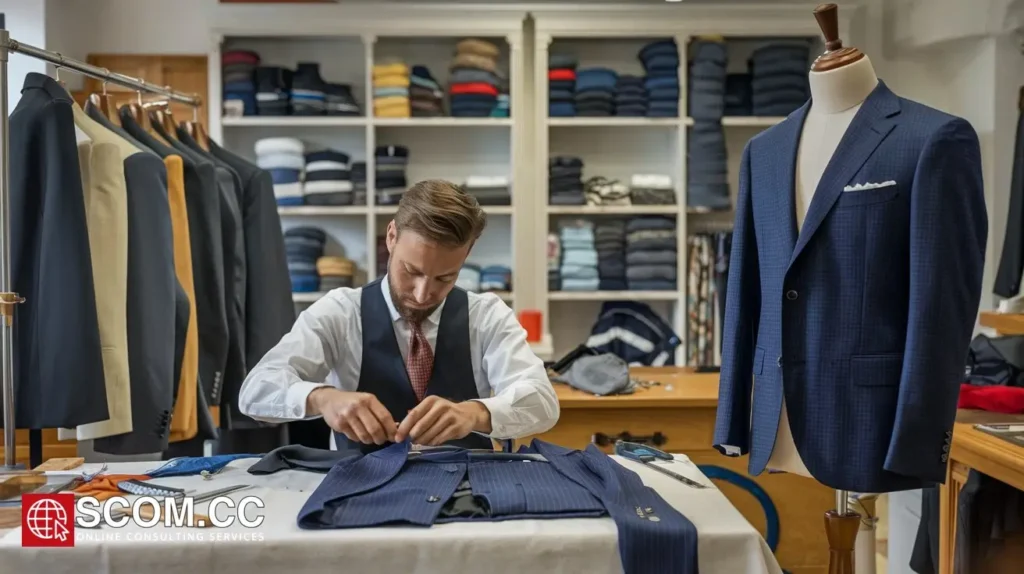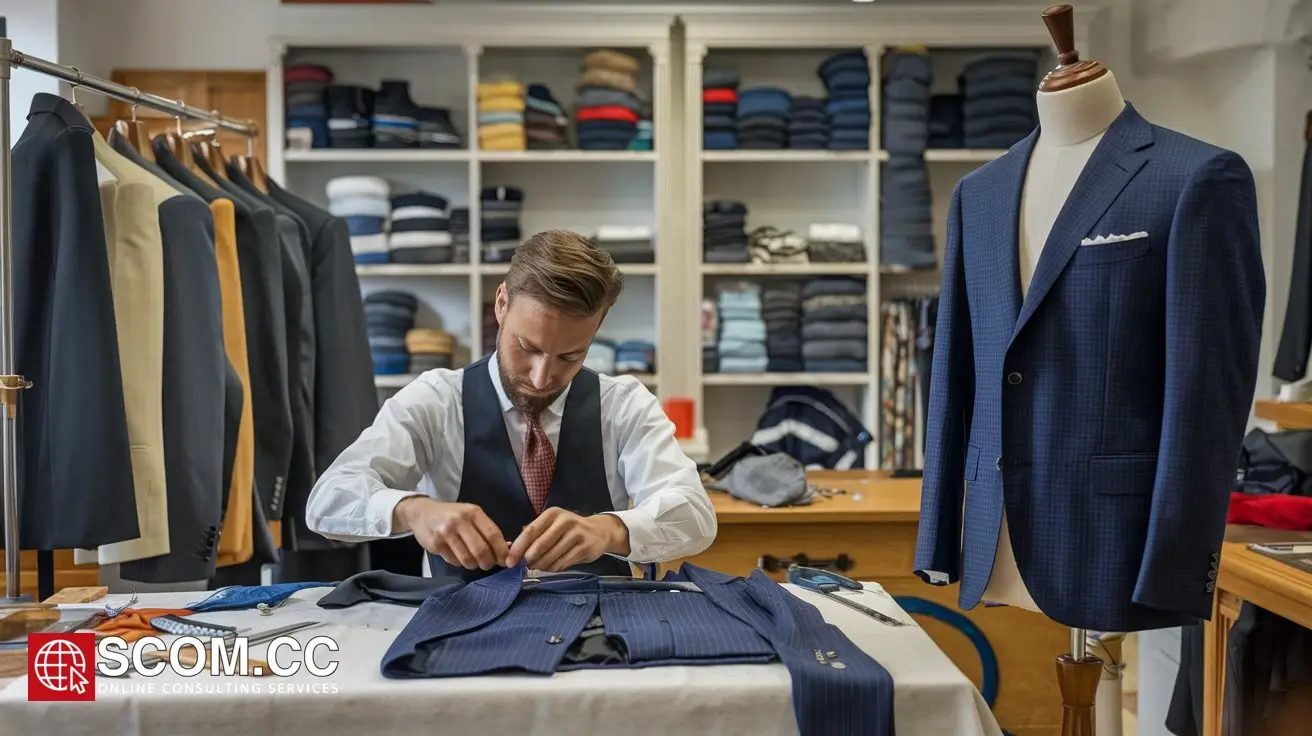How Can Tailors Design Unique Patterns for Exclusive Garments?

- How Can Tailors Design Unique Patterns for Exclusive Garments?
- Understanding the Client’s Vision
- Research and Inspiration
- Drafting the Initial Pattern
- Refining and Adjusting Patterns
- Incorporating Innovative Techniques
- Finalizing the Garment
- Documenting and Archiving Designs
- Conclusion
- Table Summary
-
FAQ
- 1. How do I start designing a unique pattern for an exclusive garment?
- 2. What role does client consultation play in pattern design?
- 3. How can historical and cultural research influence pattern design?
- 4. What are some innovative techniques for creating unique patterns?
- 5. Why is prototyping important in pattern design?
- 6. How do I ensure a perfect fit with a custom pattern?
- 7. What should be included in pattern documentation?
How Can Tailors Design Unique Patterns for Exclusive Garments?
In the world of fashion, designing unique patterns for exclusive garments is both an art and a science. Tailors and designers who master this craft can create pieces that stand out in both aesthetics and function, reflecting individuality and sophistication. This article delves into the methodologies and techniques tailors can use to design one-of-a-kind patterns for exclusive garments, ensuring they are both innovative and tailored to the highest standards.
Understanding the Client’s Vision
Before embarking on the design process, it’s crucial to understand the client’s vision. This involves:
- Initial Consultation: Engage in detailed discussions with the client to grasp their preferences, needs, and style. Understand the purpose of the garment, whether it’s for a special event, daily wear, or a specific occasion.
- Style and Aesthetic Preferences: Gather insights into the client’s favorite styles, colors, fabrics, and any specific elements they wish to include. This information forms the foundation for creating a pattern that truly resonates with the client’s desires.
Research and Inspiration
Creating unique patterns often starts with research and finding inspiration. This process includes:
- Historical and Cultural Research: Explore historical garment patterns and cultural designs that may inspire the pattern creation. Understanding historical influences can provide a rich source of unique design elements.
- Trend Analysis: Analyze current fashion trends to identify elements that can be reinterpreted in a fresh, exclusive way. This helps ensure that the pattern is both unique and relevant.
- Artistic Inspiration: Look beyond fashion to art, architecture, and nature for design inspiration. Patterns inspired by these sources can introduce innovative and unexpected elements to the garment.
Drafting the Initial Pattern
With inspiration and client input in hand, begin drafting the initial pattern:
- Basic Block Creation: Start with a basic pattern block that fits the client’s measurements. This serves as the foundation for further design modifications.
- Incorporating Design Elements: Integrate unique design elements into the basic block. This could involve altering the silhouette, adding intricate details, or experimenting with asymmetry.
- Prototyping: Create a prototype or muslin of the garment to test the pattern. This allows you to see how the design elements come together in practice and make necessary adjustments.
Refining and Adjusting Patterns
Refinement is key to ensuring that the pattern achieves the desired fit and design. This step includes:
- Fit Adjustments: Conduct fittings with the client to test the prototype. Note any issues with the fit and make adjustments as needed. This may involve altering seam lines, adjusting darts, or modifying the garment’s structure.
- Detailing: Refine the pattern’s details, such as adding or modifying pleats, pockets, or embellishments. Ensure that these elements are both functional and aesthetically pleasing.
- Finalization: Once all adjustments are made, finalize the pattern. Prepare it for cutting by making any necessary modifications to the pattern pieces and ensuring they are properly aligned.
Incorporating Innovative Techniques
To create truly unique patterns, consider incorporating innovative techniques:
- Mixed Media: Combine different fabrics, textures, or patterns to create a distinctive look. For example, integrating leather with traditional fabric or using a combination of prints can result in a striking garment.
- 3D Design Elements: Utilize 3D elements like appliqué, embroidery, or sculptural details to add depth and dimension to the garment. These elements can make the pattern stand out and add an exclusive touch.
- Customization and Personalization: Incorporate personalized elements such as monograms, custom embroidery, or bespoke trims that reflect the client’s personality and preferences.
Finalizing the Garment
The final steps involve bringing the pattern to life and ensuring the garment is of the highest quality:
- Cutting and Sewing: Carefully cut the fabric according to the finalized pattern and sew the garment with precision. Pay attention to seam allowances and finishing techniques to ensure a professional result.
- Quality Control: Inspect the completed garment for any imperfections or inconsistencies. Ensure that all design elements are properly executed and that the garment meets the client’s expectations.
- Client Presentation: Present the finished garment to the client, ensuring it fits well and aligns with their vision. Make any final adjustments as requested and prepare the garment for delivery.
Documenting and Archiving Designs
For future reference and to maintain a record of your unique creations, consider:
- Pattern Documentation: Keep detailed records of the patterns you create, including sketches, fabric choices, and design modifications. This documentation can serve as a valuable resource for future projects.
- Client Profiles: Maintain profiles for clients, noting their preferences, measurements, and any unique design elements included in their garments. This information can help streamline future design projects and ensure consistency.
Conclusion
Designing unique patterns for exclusive garments requires a blend of creativity, technical skill, and a deep understanding of the client’s vision. By following these steps—from initial consultation and research to finalizing the garment and documenting designs—tailors can create exceptional, one-of-a-kind pieces that stand out in both design and craftsmanship. Mastery of these techniques not only enhances the tailor’s ability to produce exclusive garments but also ensures that each creation is a true reflection of individual style and elegance.
Table Summary
| Step | Description | Key Actions |
|---|---|---|
| Understanding the Vision | Grasp client preferences and garment purpose | Conduct consultation, gather style preferences |
| Research and Inspiration | Explore historical, cultural, and artistic sources | Analyze trends, find design inspiration |
| Drafting the Initial Pattern | Create and test the initial pattern design | Draft basic block, integrate design elements |
| Refining and Adjusting | Make fit adjustments and refine design details | Conduct fittings, finalize pattern |
| Incorporating Techniques | Use innovative techniques for uniqueness | Apply mixed media, 3D elements, customization |
| Finalizing the Garment | Cut, sew, and inspect the garment | Ensure quality and fit, present to client |
| Documenting Designs | Keep records of patterns and client profiles | Document patterns, maintain client profiles |
FAQ
1. How do I start designing a unique pattern for an exclusive garment?
Begin by understanding the client’s vision and preferences, conducting research for inspiration, and drafting an initial pattern based on these insights.
2. What role does client consultation play in pattern design?
Client consultation helps tailor the pattern to the client's specific needs and preferences, ensuring the final garment aligns with their vision and style.
3. How can historical and cultural research influence pattern design?
Historical and cultural research provides a rich source of design elements and motifs that can be reinterpreted in modern patterns, adding uniqueness and depth to the garment.
4. What are some innovative techniques for creating unique patterns?
Techniques such as using mixed media, incorporating 3D elements, and personalizing with custom details can make patterns stand out and add an exclusive touch.
5. Why is prototyping important in pattern design?
Prototyping allows you to test the pattern’s fit and design elements in a muslin or toile before cutting into the final fabric, ensuring accuracy and making necessary adjustments.
6. How do I ensure a perfect fit with a custom pattern?
Conduct fittings with the client using a prototype to identify and address any fit issues, making adjustments as needed to ensure the final garment fits perfectly.
7. What should be included in pattern documentation?
Document details such as sketches, fabric choices, design modifications, and client preferences. This helps in maintaining consistency and provides a reference for future projects.

To explore more about tailoring, visit our Blog of Tailoring. If you have any questions or need assistance, go to our contact page. Additionally, you can find more information about tailoring and consulting at this tailoring and consulting portal.

Leave a Reply